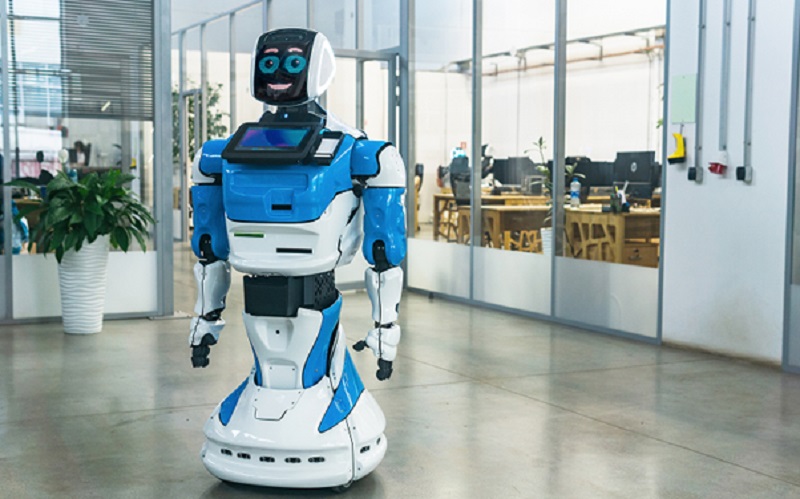Singapore faces complex security needs across malls, business parks, and transport nodes. A robot security guard in Singapore adds persistent coverage, collects high-quality data, and reduces exposure to risky zones for human officers. When sites connect mobile patrols to advanced robot management software and align operations with smart city security solutions, teams respond faster with clearer context. This approach replaces reactive routines with planned resilience that scales as estates grow. Clear roles, tested routes, and consistent logs make daily operations calmer and easier to supervise.
1. From Static Watching To Mobile Coverage
Fixed cameras and stationed guards cannot view every corridor or car park ramp. A robot security guard in Singapore moves through these spaces on planned routes, navigates obstacles, and returns with repeatable logs. Mobile vantage points reduce blind spots, and scheduled sweeps create a rhythm that occupants recognise and respect.
2. The Platform That Orchestrates Every Patrol
Patrol quality depends on the system that assigns routes, verifies checkpoints, and records evidence. Advanced robot management software handles these tasks, synchronises handovers, and triggers alerts when conditions drift from baseline. The same platform archives media with timestamps and access controls so investigations begin with reliable records, not guesswork.
3. Turning Signals Into Decisions With AI
Modern sites generate more video and sensor data than any team can review in real time. Smart city security solutions filter noise and flag anomalies such as tailgating, loitering, or heat build-up near plant rooms. Operators receive concise clips and location markers, and the robot returns to verify before staff commit to a response. Pattern learning improves over time and reduces repeat nuisance alarms.
4. People Remain Central To Good Security
Technology extends reach while people exercise judgment and empathy. Officers use robots to confirm alarms at a distance, guide visitors during partial evacuations, and document incidents without delay. Clear procedures define who verifies, who escalates, and who closes the loop, which keeps accountability simple and improves confidence across tenants.
5. Practical Integration Across Building Systems
Robots reach their potential when they work with lifts, doors, and access control. Advanced robot management software requests permissions, books lift trips, and confirms relock events after passage. Smart city security solutions record each transaction in one timeline so operators can reconstruct routes and actions within minutes.
6. Privacy, Safety, And Transparent Governance
Trust grows when operators explain what the system records and how long data remains accessible. Sites publish signage, restrict viewing rights to named roles, and mask faces where policy requires. A robot security guard in Singapore patrols with visible status lights and clear audio, which helps bystanders understand intent and reduces anxiety. Clear governance turns sophisticated tools into acceptable, everyday helpers.
7. Resilience For Real City Conditions
Urban environments change with events and weather. Robots need safe modes for crowds, puddles, and blocked corridors, along with plans for power dips or network loss. Smart city security solutions define contingencies, while advanced robot management software resumes routes automatically and schedules charging around peak movement.
8. Metrics That Prove Value And Guide Scaling
Dashboards should report time to detect, time to verify, and time to resolve. Teams compare these measures before and after deployment to show impact. When numbers improve, managers expand coverage floor by floor, and the platform adds sites without disrupting daily operations. Transparent metrics also support budget requests and make outcomes clear to leadership when needed.
9. A Roadmap From Pilot To Portfolio
Start with one site and a small set of objectives, then measure results for a month of daily use. Use findings to refine routes, permissions, and alert thresholds before adding buildings or longer patrol windows. Engage occupants with short demonstrations so they understand the purpose, privacy controls, and benefits. This staged plan builds acceptance and delivers steady value without operational shocks.
Conclusion
Cities become safer when mobile patrols, analytics, and disciplined workflows act as one system. A robot security guard in Singapore extends coverage where fixed assets fall short. Advanced robot management software coordinates patrols and evidence handling. Smart city security solutions turn diverse signals into clear action so teams protect people, assets, and confidence with measurable gains.
To run a precinct-wide proof of concept with crowd-event playbooks, a multi-site SLA, and a live dashboard tracking detection, verification, and resolution times, contact KABAM Robotics.

